The mood around Lake Cawndilla in western New South Wales on Saturday is funereal but defiant, as a procession of around 60 locals parade through scrub and sand around its banks.
They carry between them a series of 30m-long cloth figures: three local citrus farmers and prominent Baakandji artist William Badger Bates.
The fates of all four are tied to the health of the Darling/Baaka River, but like the embattled waterway there are still signs of life, and fight, in all of them.
“It looks like a burial but it’s not,” French street artist JR explains the night before, via Zoom. “It’s a funeral march for what’s happening slowly in front of our eyes.”
JR, an internationally renowned artist – whose past projects have commandeered sites ranging from the Louvre’s glass pyramid to an abandoned Ellis Island hospital – knew little about the Murray-Darling back in February 2020, when he flew into a country still choked with the smoke and trauma of that summer’s bushfire crisis.
But then he stepped on to Baakandji Country with Bates.
“The whole river’s empty, and all the locals tell you they’ve never seen it this way. I was really humbled in many ways because I’m on his land, and he’s an artist also,” he says of Bates. “Who am I as a French person to tell the story better than anyone there?”
JR soon found common threads between the plight of communities in regional Australia and the struggle of farmers on Italy’s Alfina plateau who were at the centre of Omelia Contadina, his 2020 collaboration with Italian film-maker Alice Rohrwacher. His multi-part NGV Triennial work, Homily to Country, again uses photography, portraiture and people to bring a human face to ecological and ethical questions that often prove too big, too complex or too abstract to capture the public’s imagination.
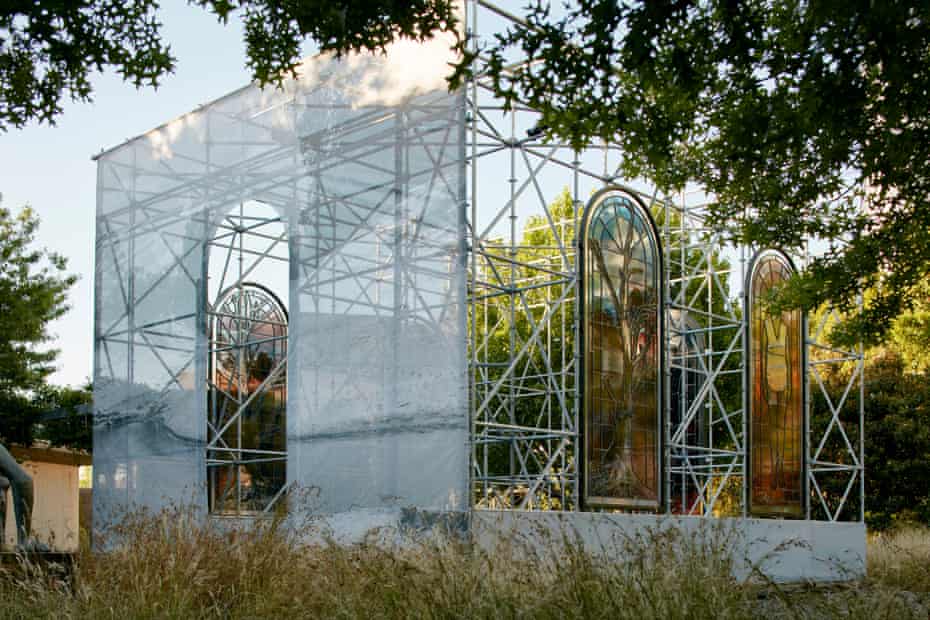
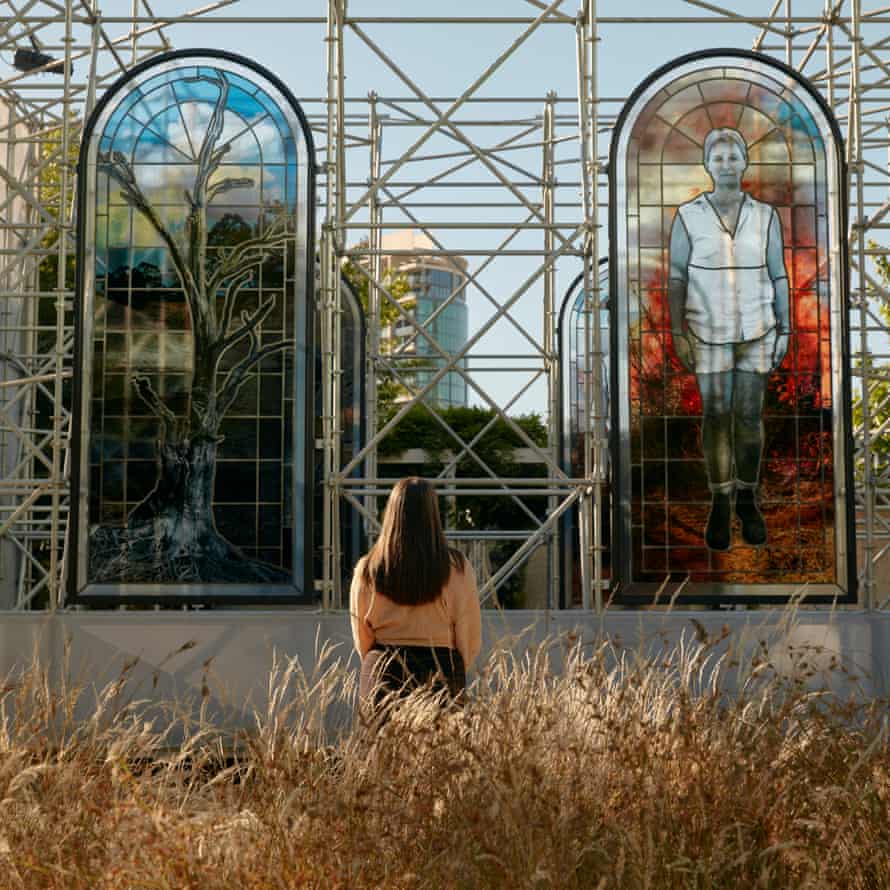
The first part of the work is on display in the NGV’s garden: JR’s shots of Bates and Rachel Strachan, Alan Whyte and Wayne Smith – farmers forced to all but abandon their orchards – invite reverence and reflection as stained-glass windows in a makeshift, open-air chapel.
The second part consists of the procession at Lake Cawndilla, and a permanent, filmed record of the moment which will be added to the exhibition. Incorporating aerial drone photography that captures the scale of the cloth portraits set against the landscape, it’s slow, meditative art that courts online virality as part of its mission.
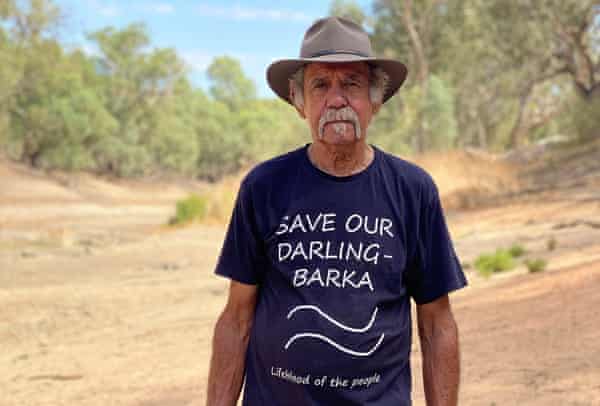
“You hear about agriculture and the dilemmas; the farmers killing themselves. And yet there are no strong and powerful images that make you reflect on that. In Italy for example, when you go through the areas that are devastated by the monoculture of nuts … for someone who’s a non-farmer like me, it just looks green.”
The colour green hits differently around Menindee: recent reports of new toxic algal blooms have imperilled locals’ drinking water and raised fresh questions about why the river continues to languish despite years of government initiatives and billions of dollars meant to restore it to health. That ongoing sickness was vividly illustrated in 2019, when the oxygen-starved waters around Menindee became blanketed with up to a million dead fish.
To Bates, these are existential questions: “I say the Baaka is my ngamaka – that means my mother. I have three mothers: my mum, my grandma and the Baaka. It’s fed us, and looked after us, and we really respect it.”

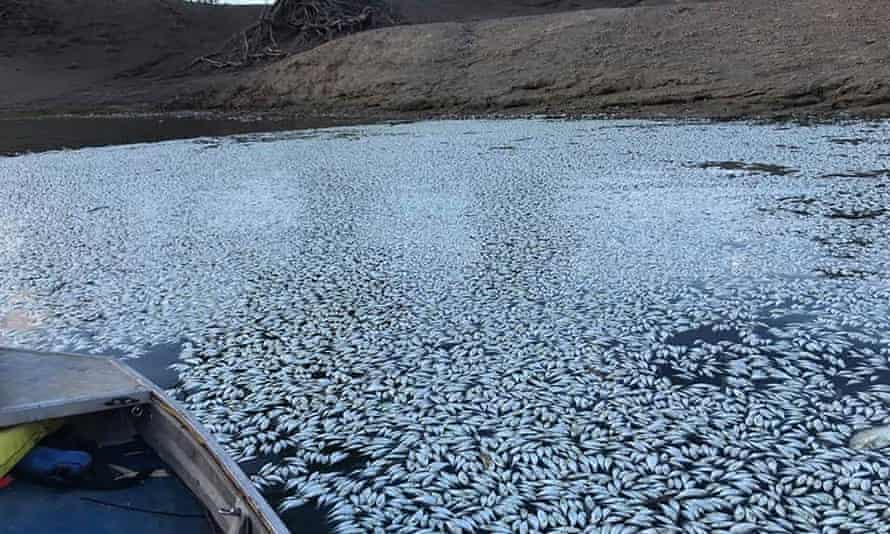
Baakandji people and their river have adapted and thrived through an ice age and thousands of years of gradual change, but Bates says the upheaval brought by climate change and upstream irrigation is something else entirely. “We’re not helping nature, we’re making nature change its course. Us humans are doing it – we think we’re smart, but we’re outsmarting ourselves, and the proof is in the pudding at Menindee.”
Two years on from the fish kills, what could have been a galvanising moment has left Bates and his community feeling exasperated and disempowered by yet more enquiries, compromises and photo ops without adequate follow-through.
“You go back two months ago, Gladys [Berejiklian] came out and let a lot of fish go,” he says of the NSW’ premier’s recent release of 60,000 Murray Cod bred from a handful of survivors rescued from the 2019 fish kills. “We let them go, but now these fish are just about ready to die because the lower Menindee, where we put them in, there’s no water to keep [them] going.”
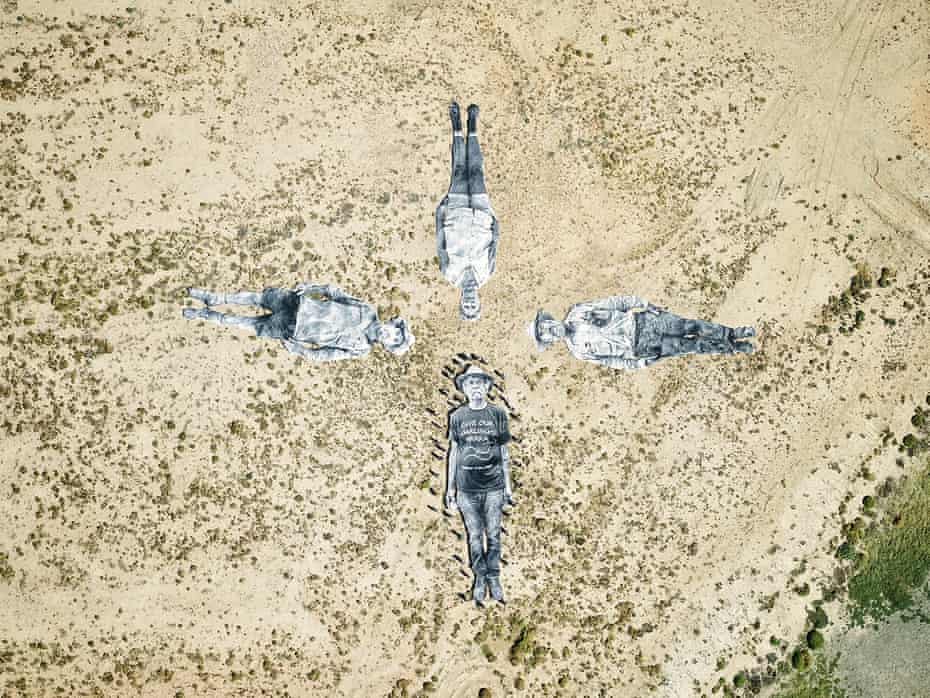
Travel restrictions prevented JR returning to see his portraits make their pilgrimage back to the Darling/Baaka where they were taken – but, he says, it’s for the best.
“I kind of like the fact that the march will happen with only locals. Because why do you need an international artist in the middle of it? My part was meeting the people, enlarging the photos, working with the museum. Of course I would have loved to be there to walk with everyone, but … it’s their project, it’s their fight, it’s their stories.”
For Bates, a man who speaks with the beleaguered determination of someone who has tried everything and heard every excuse, the prospect of such an artist lending their international profile to his “darling Baaka” means a lot.
“It’s the best thing that’s ever happened to us. He’s world-renowned, plus he’s putting something out there that we – that’s black people and white people that live on the Baaka – haven’t got a chance to do. This is giving us a chance. To me and everyone, he’s a godsend to us.”
o The Triennial is open until 18 April at the National Gallery of Victoria, Melbourne